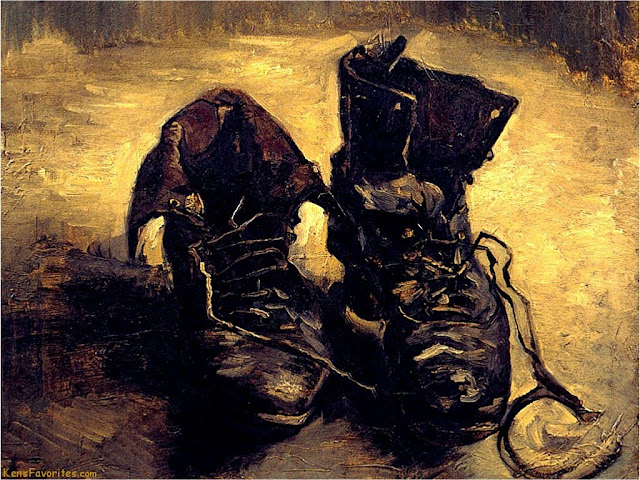An insightful new exhibition
Scott Horton writes on a new exhibition based around Vincent van Gogh's painting, 'A Pair of Shoes' (1886), and its significance to twentieth-century philosophy:
Cologne’s Wallraf Richartz Museum has launched an impressive new exhibition entitled “Vincent van Gogh: Shoes,” built around a celebrated painting by the Dutch master from 1886. Some might wonder how an exhibition can be framed around a single work with such a modest subject matter, but the curators provide us an impressive model. The exhibition focuses on the extraordinary role this painting has played in modern philosophy surrounding art, its reception, and its relationship to the history of ideas. A half dozen philosophers and art historians have written about van Gogh’s painting of shoes, including Martin Heidegger, Meyer Schapiro, and Jacques Derrida. The exhibition takes us on a trip through their writings—sometimes comic, occasionally downright rude, and often exhilarating. These thinkers certainly bar no holds in their clamber to be exceedingly profound.
We should start with the facts now established as to the origins of this painting. In 1886, van Gogh visited a Paris flea market and came across a pair of worn-out shoes. He bought them and brought them back to his atelier in the city’s Montmartre district. It’s not clear why he bought them, but it could be simply that he needed a new pair of shoes. Apparently, he did try to wear them and found the fit impossible. Instead, he decided to use them as a prop for painting, and the shoes soon became the most celebrated footwear in the history of modern art. But that may be less the direct result of van Gogh’s painting than of its critical reception by eminent writers. [Read More]
More information:



